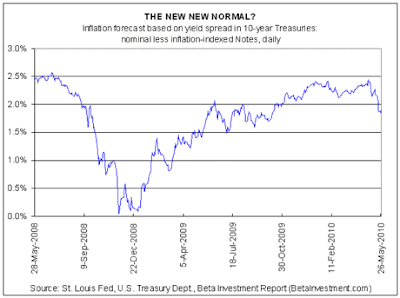The pundits are buzzing about the rapid decline in the money supply of late. The latest catalyst for the chatter is a story yesterday in the Telegraph, which ran this provocative headline: “US money supply plunges at 1930s pace as Obama eyes fresh stimulus.”
The story goes on to report:
The M3 money supply in the United States is contracting at an accelerating rate that now matches the average decline seen from 1929 to 1933, despite near zero interest rates and the biggest fiscal blitz in history.Monetary economist Tim Congdon from International Monetary Research tells the Telegraph that the descent in the money supply is "frightening." He says that "the plunge in M3 has no precedent since the Great Depression. The dominant reason for this is that regulators across the world are pressing banks to raise capital asset ratios and to shrink their risk assets. This is why the US is not recovering properly."
The Federal Reserve no longer publishes M3, although the underlying components are still available and so the series can be calculated by anyone inclined to do so. Unsurprisingly, other measures of money supply are falling too. The annual percentage change in M2, for instance, has been dropping like a rock for months, as the chart below shows.

The trend is more than a little worrisome, given the recent rise in deflation risk, albeit a mild rise and therefore one that may yet turn out to be a false alarm. The markets are constantly forecasting the future, but the forecasts aren't 100% accurate. Figuring out when they're wrong is the trick. That said, the Treasury market's 10-year inflation forecast has dipped under 2% over the past week or so for the first time since last October. So far, the market's inflation outlook is holding steady at around 1.9%, as the second chart below shows.

Did the Treasury market overreact? Is the threat of deflation overstated? Maybe, although the steep fall in the money supply is one reason for wondering. Another is looking around the world and seeing that the D risk is on the rise in Britain and Japan. Deflation in the U.S. and U.K. "cannot be ruled out," warned Adam Posen (external member of the Monetary Policy Committee and senior fellow at the Peterson Institute for International Economics) in a speech earlier this week.
Economist Carmen Reinhart, co-author of This Time Is Different: Eight Centuries of Financial Folly, made a similar observation yesterday. As the The Hill reported…
The level of U.S. debt has reached a point at which economic growth traditionally begins to slow, a bipartisan fiscal commission making recommendations to the White House and Congress was told Wednesday.The warning signs are mounting. Much depends on how the Fed conducts monetary policy from here on out. Nominal interest rates are low, virtually zero in fact. But as Scott Sumner, an economist who blogs at The Money Illusion, has repeatedly counseled, it's still possible to have tight money and low nominal rates. As such, deflation may still be a risk at this point in the economic cycle. The solution? Growth. In particular, growth in a number of key economic metrics in May and beyond. But collecting and publishing the relevant data will take time. It'll be a while before we definitively figure out if all the deflation talk is really just talk.
The gross U.S. debt is approaching a level equivalent to 90 percent of the country's gross domestic product, the level at which growth has historically declined, said Carmen Reinhart, a University of Maryland economist.
When gross debt hits 90 percent of GDP, Reinhart told the commission during a hearing in the Capitol, growth "deteriorates markedly." Median growth rates fall by 1 percent, and average growth rates fall "considerably more," she said.
Reinhart said the commission shouldn't wait to put in place a plan to rein in deficits.
"I have no positive news to give," she said. "Fiscal austerity is something nobody wants, but it is a fact.
Gross debt is at 89 percent and will reach 90 percent by the end of the year, said Sen. Kent Conrad (D-N.D.), a member of the commission.
This article has been republished from James Picerno's blog, The Capital Spectator.
No comments:
Post a Comment